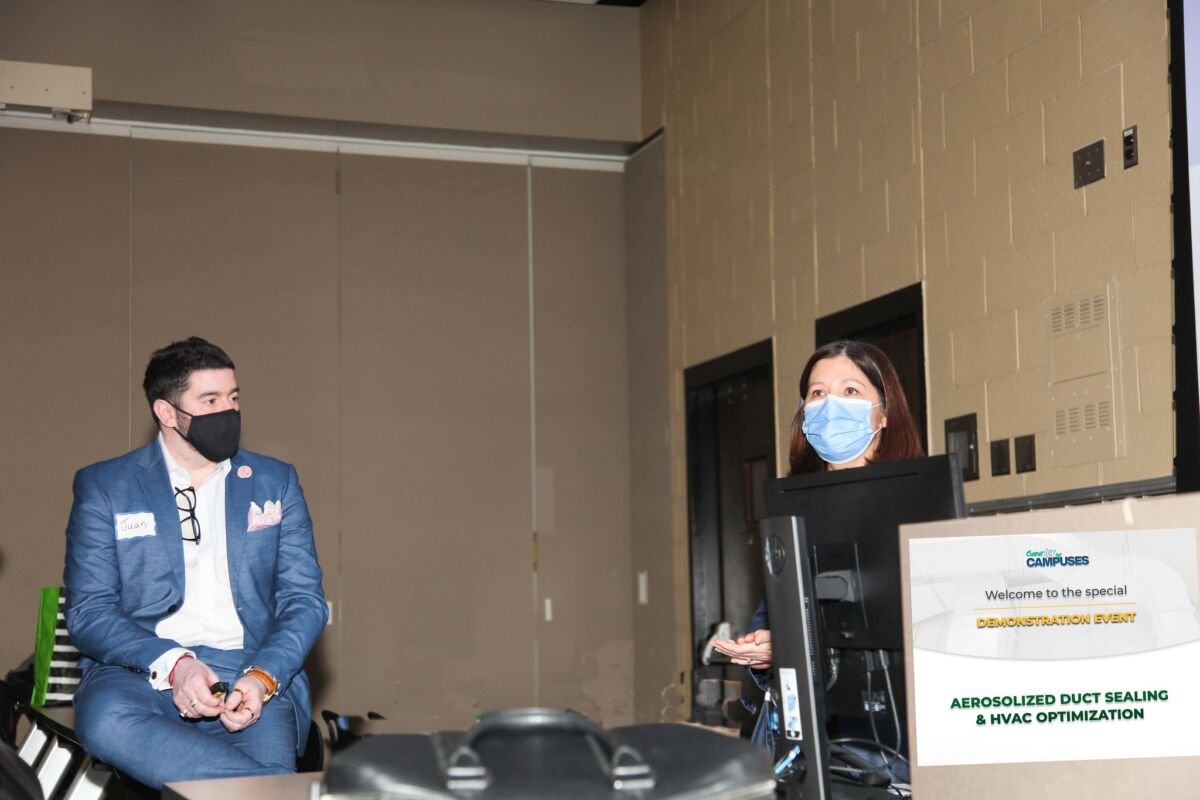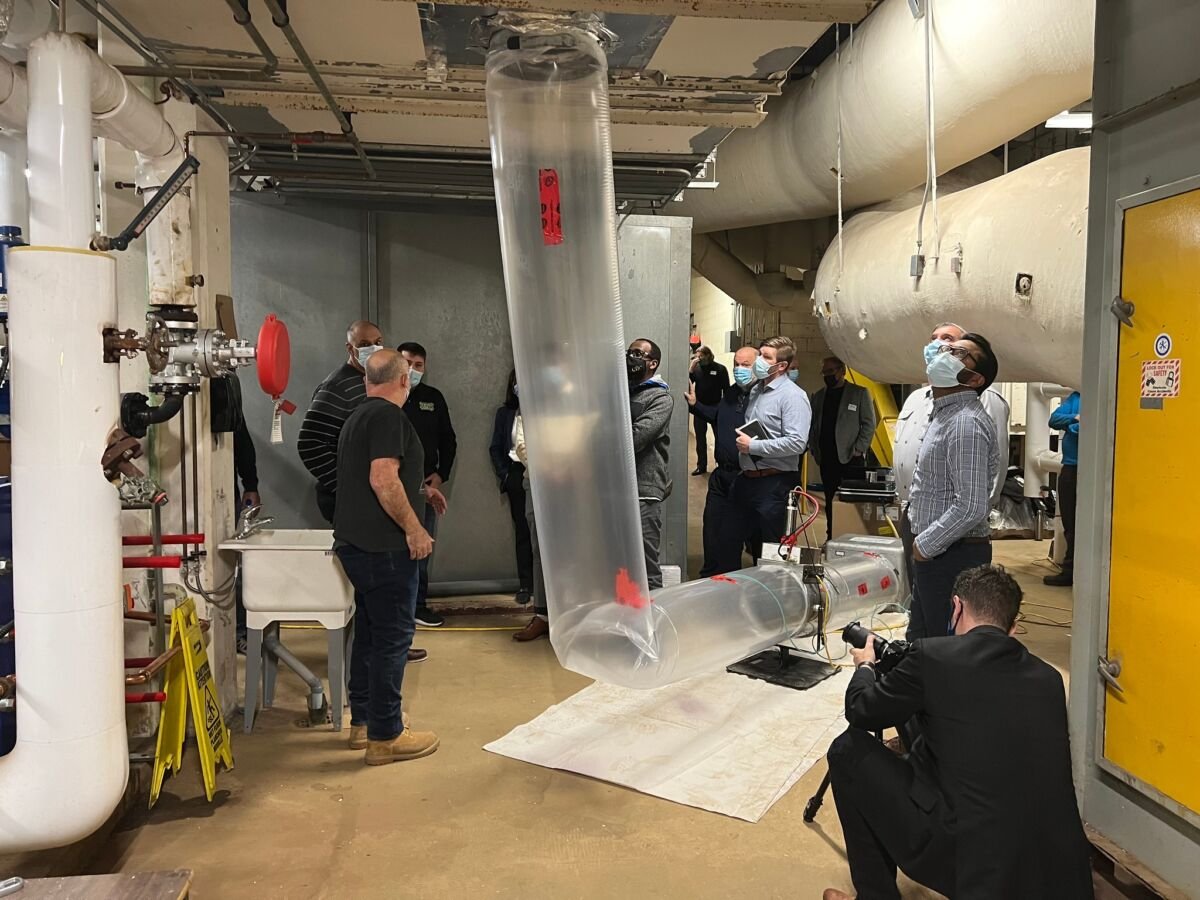St. Clair breathing better thanks to Cleaner Air for Schools and Campuses program
St. Clair College has taken an important step to improve the quality of its learning and teaching environment by joining the Cleaner Air for Schools and Campuses program.
The Cleaner Air for Schools and Campuses (CAFS) program is a collaborative initiative between Nerva Energy, Mohawk College, Thomas Cole Inc., and climate change leaders to help colleges and schools across Ontario deploy solutions proven to improve indoor air quality and ventilation while harvesting energy and carbon savings. The goal of the CAFS program is to increase ventilation by 25 percent to 45 percent in campuses and schools by using Aerosolized Duct Sealing, an award-winning technology that eliminates air leakage from the ductwork.
St. Clair College recently installed Aerosolized Duct Sealing technology on its South campus to the benefit of over 6,000 students and approximately 2,000 staff and faculty. The College recently hosted an event to share the data from its new ventilation and HVAC optimization program with representatives from local school boards, universities, hospitals, and community housing.
Rebecca Demchuk, Associate Vice President, Safety, Security & Facilities Management at St. Clair, told the audience the air leakage rate at the College dropped from 36.9% to 3% after implementing Phase 1 of the CAFS program in an isolated air ductwork system.
“Going down from a 36 percent leakage rate to a three percent air leakage rate is huge and that is only going to help the College as a whole by improving our ventilation and reducing greenhouse gas emissions and energy,” Demchuk said. “We are using this as a test case and then hopefully we will be able to do some additional systems.”
With the potential for energy savings and carbon reduction, implementing the CAFS program has become the gold standard for indoor air quality and energy within the education sector in Ontario. Since March 2020, the CAFS program has been implemented in over 320 schools in Ontario. The airflow in those schools increased by an average of 36 percent while reducing greenhouse gas emissions by an average of 27.7 percent.


